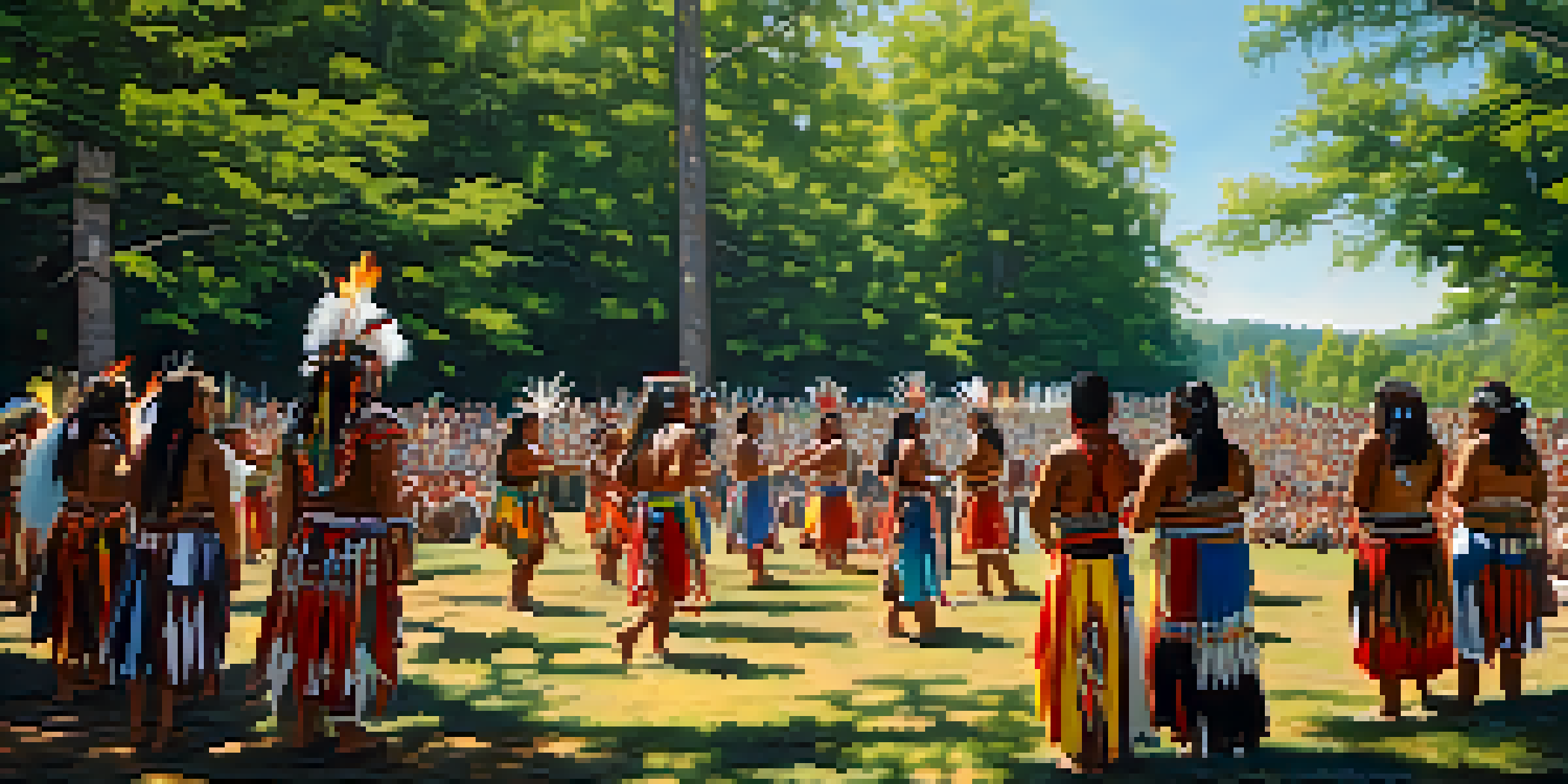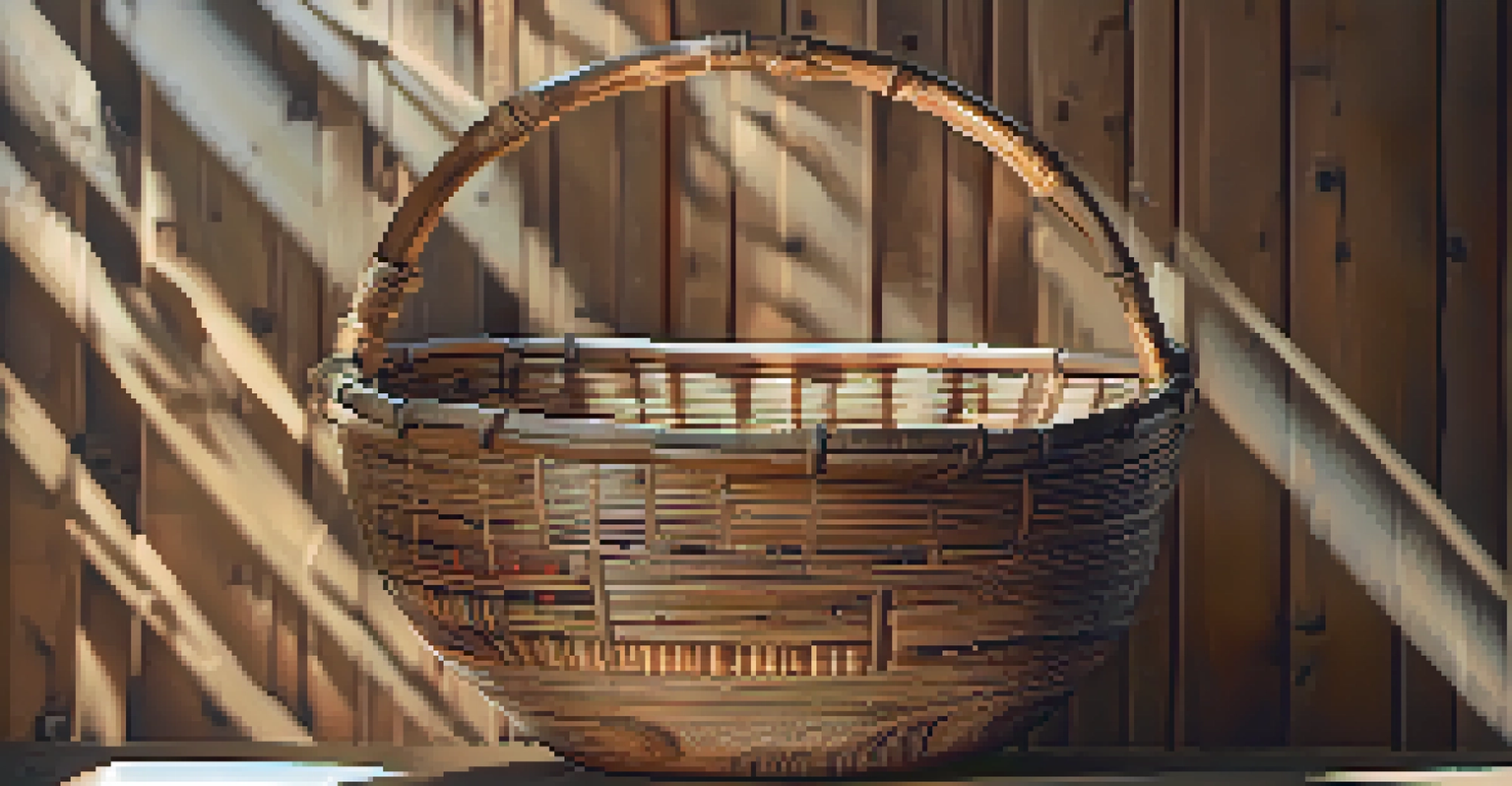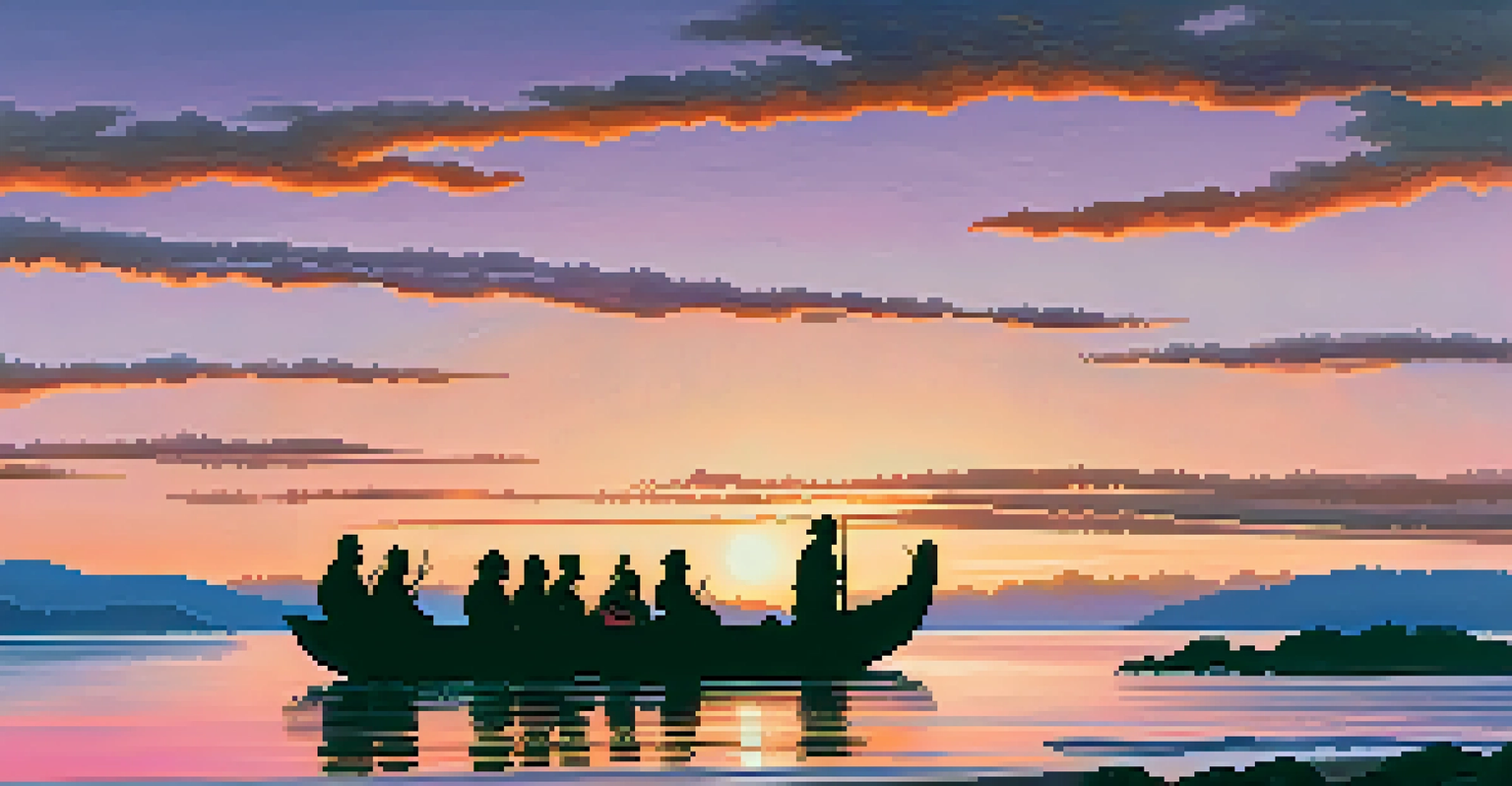Exploring Indigenous Cultures in Washington State's History

The Diverse Indigenous Tribes of Washington State
Washington State is home to a rich tapestry of Indigenous tribes, each with its own unique traditions and languages. From the coastal Salish tribes to the interior Plateau cultures, the diversity is astounding. These tribes have thrived for thousands of years, adapting their lifestyles to the varied landscapes of mountains, forests, and waterways. Their deep connection to the land informs their cultural practices and beliefs, showcasing a profound respect for nature.
Indigenous cultures are not just relics of the past; they are vibrant communities that continue to shape our world today.
One of the most well-known tribes is the Suquamish, whose heritage is intricately linked to the Puget Sound. Their history and culture are celebrated through storytelling, art, and traditional ceremonies. The Duwamish, another prominent tribe, have also played a significant role in the region's history, particularly in relation to Seattle's development. Understanding these tribes is crucial to appreciating the state's broader historical narrative.
As we explore these Indigenous cultures, it becomes clear that they are not just relics of the past but vibrant communities that continue to shape Washington's identity today. Their resilience and adaptability are evident as they navigate the challenges of modern life while preserving their rich traditions.
The Importance of Oral Tradition in Indigenous Cultures
Oral tradition is a cornerstone of Indigenous cultures in Washington State, serving as a vital means of passing down knowledge and history. Stories told by elders often convey important lessons, cultural values, and historical events that have shaped the community. This storytelling tradition fosters a deep sense of identity and belonging among tribe members, connecting generations through shared experiences.

For instance, the tales of the Trickster figure in Coast Salish mythology not only entertain but also impart wisdom about human nature and the environment. These stories often feature animals and natural elements, highlighting the interconnectedness of all living things. This narrative style emphasizes the importance of listening and learning, as each story offers layers of meaning and insight.
Rich Cultural Heritage of Tribes
Washington State's Indigenous tribes showcase a diverse array of traditions, languages, and deep connections to the land.
In a world dominated by written communication, the oral tradition remains a powerful tool for Indigenous peoples, allowing them to maintain their cultural heritage. It underscores the value of community and the importance of preserving one's identity in the face of external influences.
Traditional Arts and Crafts: A Reflection of Culture
Indigenous art forms in Washington State are not merely decorative; they embody the history, beliefs, and practices of the tribes. From intricate beadwork to stunning totem poles, each piece tells a story and reflects the community's values. Artists often draw inspiration from nature, using materials sourced from their surroundings, which enhances the connection between art and the environment.
The land is not a mere resource to be exploited; it is a relative to be respected and cared for.
For example, the art of weaving, particularly with cedar bark and grasses, is a traditional practice among many tribes. These woven items serve practical purposes, such as baskets and mats, while also holding cultural significance. The patterns and designs often have deep meanings, representing clan lineage or spiritual beliefs, showcasing the art's dual role in functionality and storytelling.
As we admire these artistic expressions, we can appreciate how they serve as both a means of cultural preservation and a way to engage with contemporary audiences. Many Indigenous artists today continue to innovate while staying rooted in tradition, bridging the past and present through their work.
The Role of Nature in Indigenous Spirituality
Nature holds a sacred place in the spiritual beliefs of Washington's Indigenous tribes. The land, water, and animals are often seen as relatives, deserving of respect and care. This worldview fosters a sense of stewardship, where the well-being of the environment is directly linked to personal and communal health. Rituals and ceremonies often revolve around natural elements, reinforcing this connection.
For example, salmon is not only a vital food source but also a central figure in many tribes' creation stories. The annual salmon runs are celebrated with ceremonies that honor the fish and express gratitude for its sustenance. This practice illustrates the deep respect Indigenous peoples have for the natural world and their commitment to preserving it for future generations.
Resilience Amid Historical Challenges
Despite facing colonization and forced removals, Indigenous communities continue to fight for their rights and cultural revitalization.
Through the lens of Indigenous spirituality, we can gain insights into sustainable living practices that modern society can learn from. Their holistic approach to the environment emphasizes that caring for the earth is essential for cultural survival and ecological balance.
Historical Challenges Faced by Indigenous Peoples
The history of Indigenous peoples in Washington State is marked by resilience in the face of significant challenges. From colonization to forced removals, tribes have endured hardships that have threatened their very existence. Despite these adversities, many tribes have fought tirelessly to reclaim their rights, land, and cultural heritage, showcasing an admirable spirit of perseverance.
The Treaty of Point Elliott in 1855 is a historical example, where several tribes were promised rights to their traditional lands while also facing the realities of encroachment and assimilation. This treaty, like many others, has had lasting implications, affecting the relationship between Indigenous tribes and the federal government. Understanding these historical contexts is crucial for recognizing the ongoing struggles and triumphs of Indigenous communities today.
As we reflect on these challenges, it’s important to acknowledge the strength of Indigenous peoples and their ongoing efforts to revitalize their cultures. Their commitment to preserving their languages, traditions, and ways of life is a testament to their resilience and determination.
Modern Indigenous Communities: Revitalization and Growth
Today, Indigenous communities in Washington State are experiencing a cultural renaissance, marked by efforts to revitalize languages, traditions, and practices. Many tribes are implementing language programs in schools, ensuring younger generations have the tools to connect with their heritage. This focus on education is vital for fostering pride and understanding of their rich cultural backgrounds.
Cultural events, such as powwows and festivals, have also seen a resurgence, inviting people from all backgrounds to experience Indigenous traditions. These gatherings not only celebrate heritage but also promote unity and understanding among diverse communities. By sharing their stories and practices, Indigenous peoples are bridging gaps and fostering respect.
Modern Voices Advocate for Change
Indigenous leaders are increasingly influential in social justice and environmental movements, emphasizing the importance of their perspectives.
Moreover, many tribes are engaging in environmental stewardship projects, combining traditional ecological knowledge with modern conservation methods. This proactive approach not only enhances their cultural relevance but also contributes to the broader efforts of sustainability in the region.
The Impact of Indigenous Voices in Washington State Today
Indigenous voices are increasingly recognized in contemporary discussions about social justice, environmental issues, and cultural preservation in Washington State. Activists and leaders from Indigenous communities are advocating for their rights and raising awareness about the importance of their perspectives in policymaking. This visibility is crucial for fostering a more inclusive society that values diverse viewpoints.
For instance, the involvement of Indigenous leaders in environmental movements highlights the importance of traditional ecological knowledge in addressing climate change. Their insights can lead to more sustainable practices that benefit both the environment and local communities. This collaboration paves the way for innovative solutions to pressing issues, emphasizing the wisdom that comes from lived experience.

As we move forward, recognizing and amplifying Indigenous voices will be essential in shaping a future that respects and honors the rich cultural heritage of Washington State. Their stories, experiences, and perspectives are invaluable resources for all of us as we work towards a more equitable world.